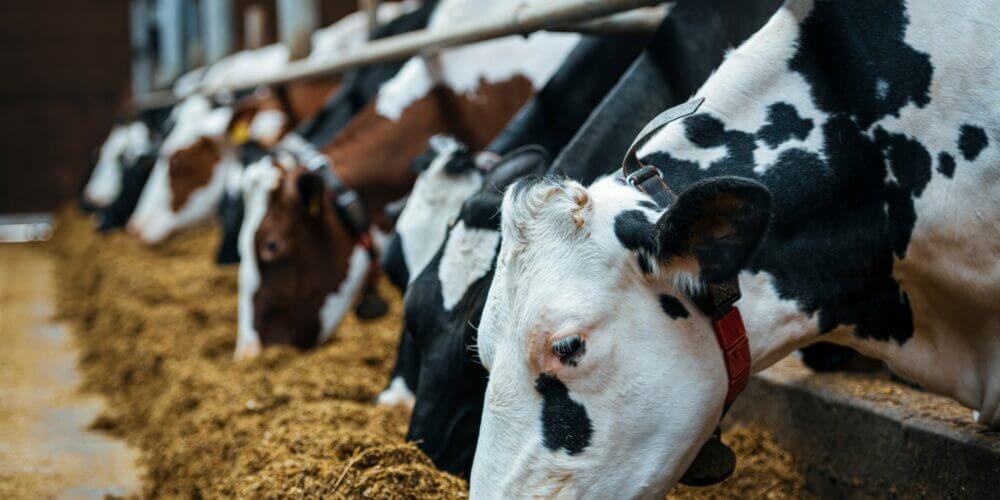Methane has rocketed up the climate agenda in recent years. Getting to grips with this potent but short-lived greenhouse gas – which has 80 times more warming potential than carbon dioxide over a 20 year period – is critical if we are to keep global heating below 1.5C.
Livestock farming – animal manure and burping ruminants (cows, sheep and goats) – already accounts for 32% of methane emissions and global demand for milk and meat is expected to increase. While governments have been loath to step in and require the industry to cut emissions, there has been growing pressure from consumers and investors for action.
The industry has responded with a range of innovations which it says will cut methane emissions while allowing them to continue growing their business as usual. The question is, do they work?
Feed supplements – which reduce the amount of methane that cattle, sheep and goats burp into the atmosphere – have attracted a lot of media attention.
A number of studies have looked at the effect of adding additives such as seaweed, garlic and citrus extract, nitrate-rich foods and synthetic additives, to animal feed and found that the methane offset potential varies considerably – even among studies of the same supplement.
One of the most promising feed additives is red seaweed which has been approved for use in Sweden, and is being considered in the UK and US. Trials have shown methane emission reductions of up to 98% when as little as 0.2% of the diet is supplemented with dried seaweed powder. Another leading additive is a synthetic supplement – marketed under Bovaer -which has received regulatory approval in Brazil, Chile and soon the EU. Its methane reduction potential averages about 30%. Garlic and citrus extract supplements, marketed under the name Mootral, also show reductions of up to 30% in a handful of trials. The lack of strong data has not prevented the company selling voluntary carbon credits – or cow credits – to the airline industry.
The big problem for all the feed additives is that they have largely been tested in feedlots where livestock consumption is tightly controlled. In the real world, where the majority of animals spend the most of their time in pastures, effectively administering supplements is much more challenging and emission reductions far more variable. This is a particular problem for Bovaer which degrades rapidly in the animal stomach and needs to be supplied constantly in order for it to work – potentially making it impractical for use with animals raised outside feedlots.
Moreover, vast quantities of feed additives would be required to deliver reductions at the global level. Harvesting wild seaweed to supplement the diets of the world’s billions of livestock is unsustainable, so new aquaculture techniques will need to be developed to produce it in the quantities needed.
There are also possible health concerns. The main active ingredient in red seaweed is a compound called bromoform that is a probable human carcinogen. However, concerning levels of bromoform have not been detected in the tissue or milk of cows fed red seaweed.
There may be a role for food additives to play in reducing the livestock sector’s methane emissions. However, variable trial results, the lack of supplements that can realistically be used safely at scale and by a wide range of farmers in a short time period, mean additives are not the silver bullet solution some media reports would suggest.
Currently the most effective and reliable way of cutting emissions are measures aimed at shifting diets – particularly in countries where the overconsumption of meat and dairy is a public health issue. The question is whether this is an approach politicians are willing to take.
Read more on the science behind feed additives.





